FEBRUARY 2021
The TS-Optics 90mm Apochromat Refractors
This is one of ~60 illustrated articles to be found in the author’s Astronomy Digest.
The TS-Optics CF-APO 90 mm f/6 FPL55 Triplet APO Refractor and TS-Optics 90 mm f/6.6 Triplet FPL53 APO Refractors
As both have very similar features, it is worth describing both and share my results using the 90 mm f/6.6 refractor that I have been able to buy recently.
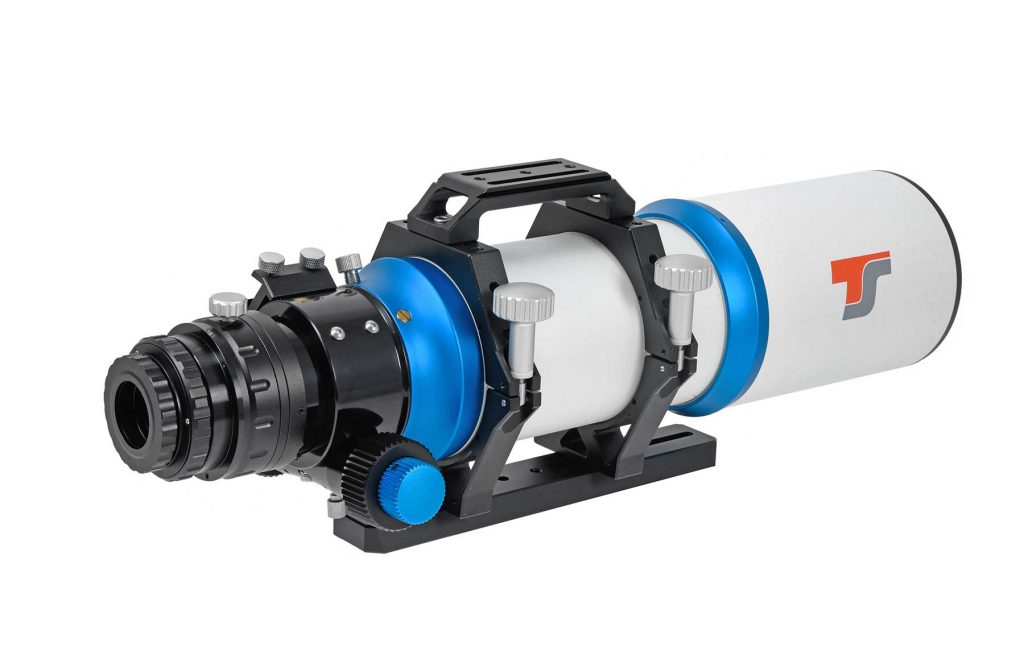
The 90 mm f/6 refractor is a new replacement of the 90 mm f/6.6 refractor which first made an appearance around 2010 using a carbon fibre tube assembly but, more recently, morphed into a really interesting telescope having an innovative metal tube assembly which solves a fundamental problem with refractor design – that of reaching focus for a wide range of uses ranging from the use of bino -viewers to astrophotography.
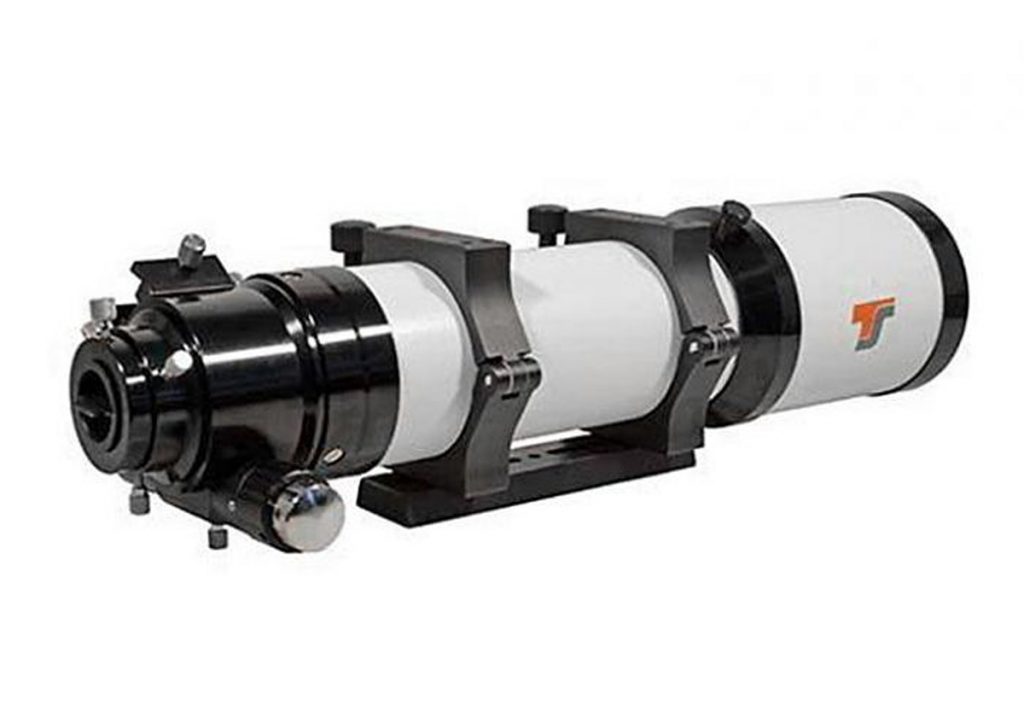
The APO objective lens
The term apo, short for apochromatic, when applied totelescope objectives tends to be used rather more widely than it should be andfew would fully satisfy the definition given by Ernst Abbe of Carl Zeiss whofirst designed them as microscope objectives using fluorite crystal (keptsecret) to produce one element:
‘Apochromat: an objective correctedparfocally for three widely spaced wavelengths and corrected for sphericalaberration and coma for two widely separated wavelengths.’
That is, a true apochromat will bring the light from three widely spaced colours across the visual spectrum to a common focus. This normally requires the use of a three element objective with one of the elements (normally the central one) made from a fluorite crystal or a high dispersive glass such as FPL53 or, recently, FPL55. (Doublet lenses using Fluorite or FPL53 as one element can come pretty close.) In one respect the key word are ‘and corrected for spherical aberration’. This is harder to achieve and may require some hand figuring to slightly aspherizes one or more of the lens surfaces. (As is done by Astro-Physics and CFF in the production of their objectives.) The Russian optical company LZOS is said to make some of the very best apo objectives in the world and these are now incorporated into APM telescopes.
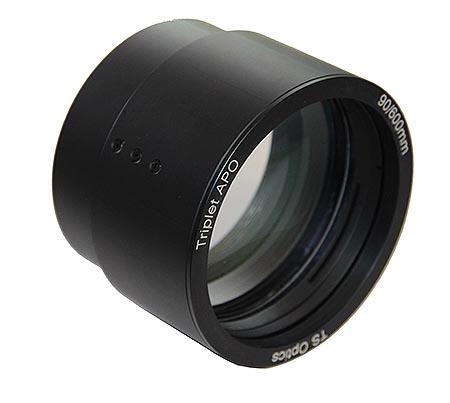
The triplet lens used in the TS 90 f/6 uses FPL55 as its central element. This glass is a replacement for the FPL53 used in the TS 90 f/6.6 and has virtually identical characteristics as FPL53 but it said to be easier to work with. The lens is likely to correspond to the earlier version which was described as follows in the manufacturer’s description:
‘The colour correction of this objective is very close to LZOS. Even at highest magnifications, the image is kept free of false colour and has a high grade of correction. The fast f/6.6 system is not only short and compact, you will have very faint and small stars without blue halo and it is also good for planetary observing or imaging.
The new Triplet lens offers a fully apochromatic performance. Through use of high quality FPL53 ED glass from Ohara (Japan) a very consistent quality is guaranteed. In the spot diagram below you can see how well the APO Objective is corrected!
The adjustable air-spaced lens is fully multi-coated for a bright and clear image. ‘
In the description of the TS 90 f/6 themanufacturer states that:
‘The 90 mm APO is pure in colour and bright in light and is equally suitable for visual observation and astrophotography. Thanks to the FPL55 APO element (comparable to FPL53) the image is first-class and in practice cannot be distinguished from the world-famous LZOS lenses from Russia.’
So I believe that the two lenses will be comparable inproducing excellent images which will show virtually no false colour.
A good doublet will show very littlefalse colour when in focus (where it matters), but will usually show colourfringing when slightly out of focus. Anapochromat will show little colour fringing even when out of focus as that ofthe TS objective shows.

‘The star test on our artificial star is equivalent to the image of a real star at a magnification around 200x. But please note that our artificial star works in autocollimation. This means that whatever optical defects there are, you will see the effects twice as strongly as on a real star!’
Sirius Star Test
Sirius was imaged inside and outside of focus when the 90 mm f/6.6 was used with a TS 2″ field flattener (I suspect the very best 2″ flattener available – see below). The overall colour hue is due to the fact that the AA 294 PRO CMOS colour camera does not equalise the RGB colours and is more sensitive to green. I think that this is a superb result.
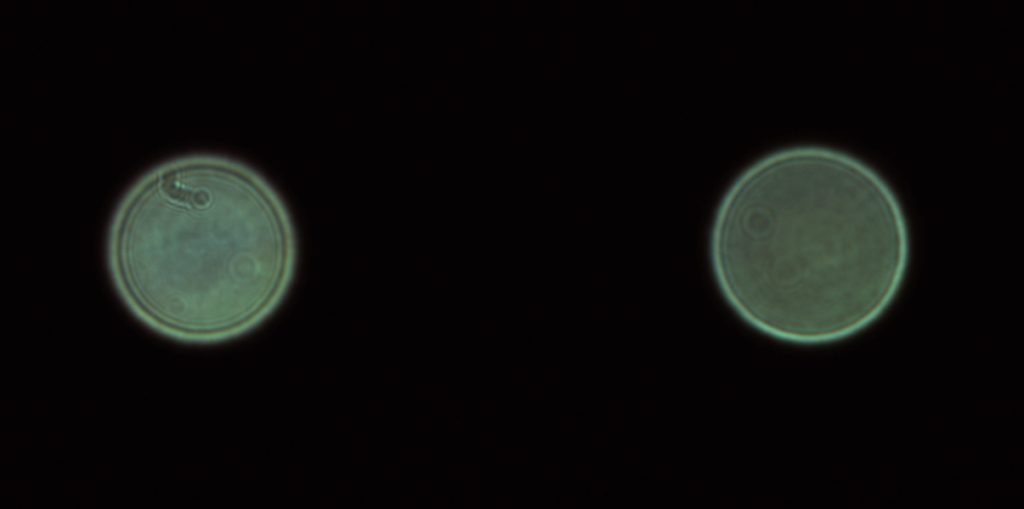
One should note that the triplet objective is airspaced. This give the optical designermore freedom when designing the lens as opposed to an oil spaced triplet and somay allow for a better lens design. However, there is one problem with air spaced triplets in that thecentral element is insulated from the ambient air temperature and so, whentaken out into the cold, the objective will take longer to reach temperatureequilibrium than will a doublet or oil spaced triplet. In fact, if a night is cooling rapidly, itmay never come to equilibrium! So itwill be best to take out the telescope some time before dark to give theobjective time to temperature stabilise.
The Focuser
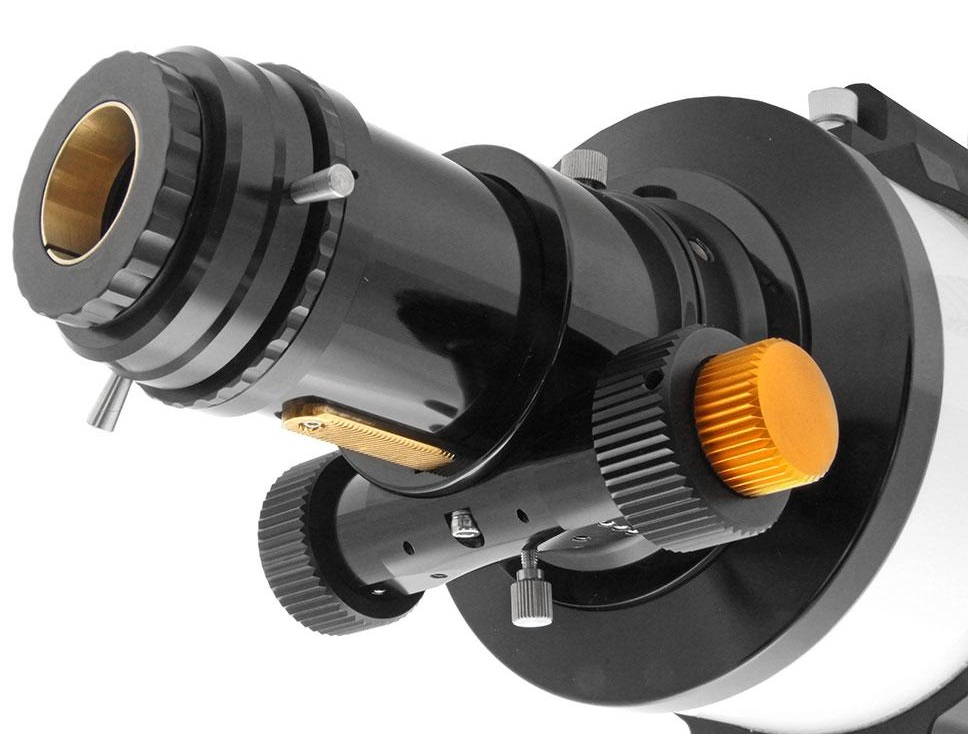
In both telescopes, the focuser has a 2.5 inch barrel with a helical rack and pinion focuser (RAP) which is modelled on the world famous ‘Starlight Express’ focusers to allow cameras to remain in focus even when imaging at high elevations. [This is why most modern refractors us a rack and pinion focuser rather a typical friction controlled Crayford focuser which has problems when handling astro cameras.]
The wider than the typical 2 inch focuser barrel reduces vignetting effects when used with large sensor cameras. The 2.5 inch helical rack and pinion focuser has a 8 inch focus range and is capable of supporting up to 6kg of imaging equipment. An excellent point is that three compression screws are used to hold the star diagonal or camera T-mount.
The TS-Optics 90 mm f/6.6 Triplet APORefractor tube assembly solves a focusproblem
A refractor will normally be designed so that the range of focus travel will easily accommodate the use of a variety of eyepieces when used with a 2 inch star diagonal. The problem the is that, usually, the focuser cannot be racked in enough to use a bino-viewer without the use of a Barlow lens (which will limit the field of view) or racked out enough so that a camera can be brought to focus without using a barrel extender. Obviously the incorporation of a shorter telescope tube and longer focuser barrel can go towards solving this problem but this will increase the cost but, more importantly, the barrel may sag somewhat when fully extended so, if a camera were to be used, the sensor would not be fully perpendicular to the light path.
This TS telescope solves this problem by using extension pieces in the main tube assembly so altering its length, enables the focuser to cover the full range of possible applications. With the minimum tube length, bino-viewers can be used without the requirement of a Barlow lens and by varying the use of the extension pieces one can bring astro cameras to focus when, for high quality imaging, a field flattener or focal reducer will be used as discussed below. This telescope thus forms the basis of a superb astrograph.
The 90mm f/6.6 used as an astrograph
All refractors suffer from what is called ‘field curvature’where the point of focus lies on the surface of a sphere centred on the nodalpoint of the lens. This is real problemwhen imaging on the flat surface of a camera sensor which becomes more of aproblem as larger sensors, up to full frame (36x24mm in size) are used. To overcome this problem, field flatteners orflattener/reducers are used and, with its variable length tube length the TS 90mm telescope supports several possibilities.
‘With the tube length at it minimum without the extender segments the effective focal length can be reduce to 450mm with an effective focal ratio of f/4.9 by the use of the 0.75x Riccardi Reducer. This combination allows full frame sensors to be fully illuminated.
Withthe tube length at its intermediate position employing a single extenderelement, the TS-Optics 2.5″field flattener can also fully covera full frame sensor.
With the tube length at is maximum, the TS 2″ field flattener can be used to cover an APS-C sensor.’
For use with my 90 mm f/6.6, I can use an x0.8 TeleVue focal reducer or the TS 2″ field flattener – as employed in the two imaging examples below.
A ‘First Light’ image
In February, a superb target for a first light image is M42, the Orion Nebula, with the blue ‘Running Man’ reflection nebula above. On a very cold night I aimed to image the nebula in colour using a Altair Astro 294 PRO, cooled CMOS Micro 4/3 sensor, camera. Ninety, 17 second, exposures were taken and saved as Tiff files. The exposure was kept short to avoid over exposing the very bright central region of the nebula surrounding the ‘Trapezium stars’. [This also means that autoguiding is not required to prevent star trails.] I had used a Televue x0.8 focal reducer which is designed for a 600 mm focal length refractor to give an effective focal length of 480 mm and focal ratio of f/5.3.
Annoyingly, when these were opened up in Photoshop it appeared that SharpCap has saved monochrome files rather than colour. I had thus only produced what is called a Luminance (L) image by those who do LRGB imaging.
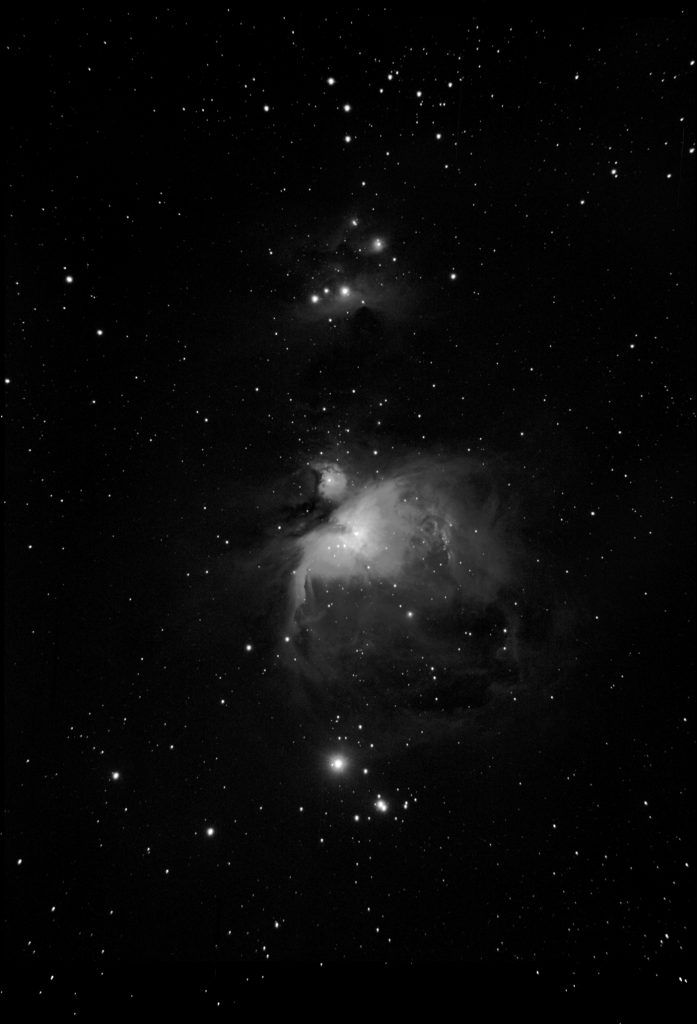
When employing LRGB imaging, the L image is used to provide the detail and the colour is provided from the RGB images which do not need to have such a high resolution and so would often be captured using 2×2 binning. If, say, 6 hours were to be allocated to produce an image, 3 hours with no binning might be used for the Luminance image and 1 hour each for the RGB images using 2×2 binning.
I thus realised that I could use this technique to add the colour to the Luminance image.
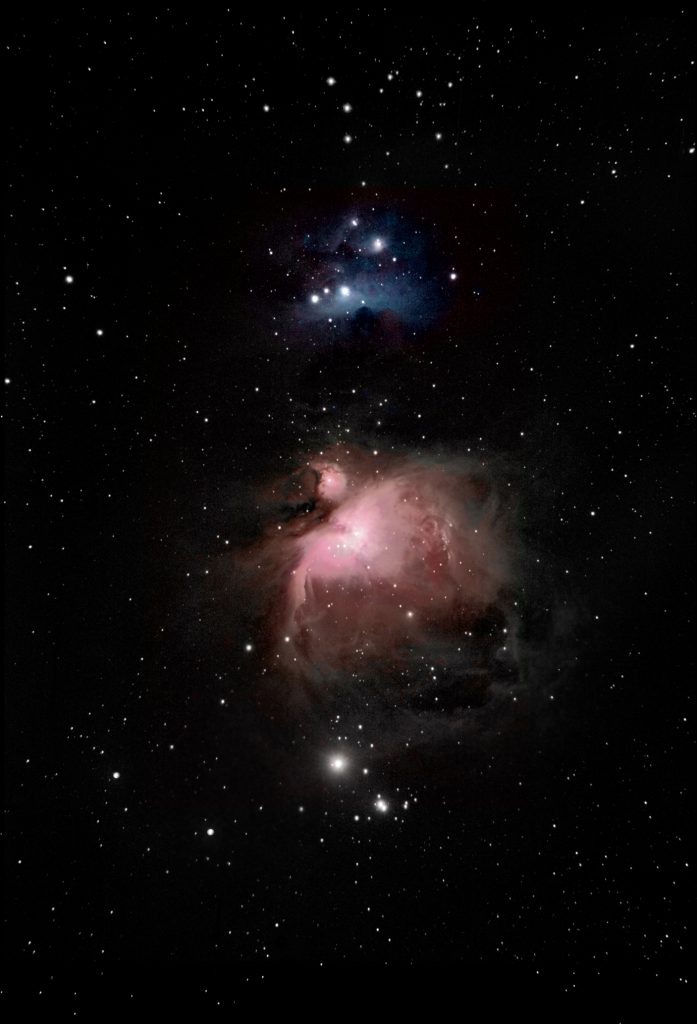
Second Light image – the M41 open cluster in Canis Major.
This time, the 90 mm f/6.6 refractor was used with the TS 2″ field flattener (see test below). The exposure time was very short, but a pleasing result was obtained showing the red-giant stars within the cluster.
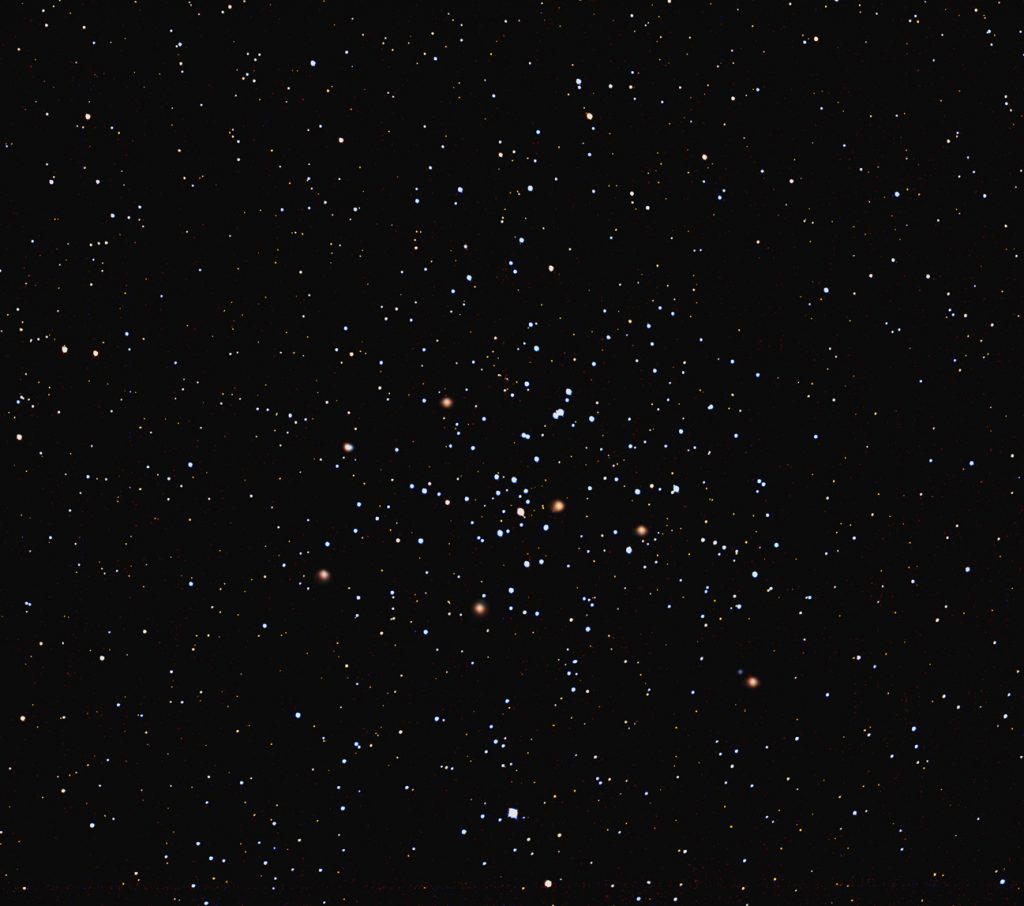
The TS 2″ field flattener – a test
To see how well the TS 2″ field flattener worked with the TS 90 mm f/6.6 refractor and a Micro 4/3 sensor I simply imaged a rich star field. One point to note is that this flattener has to be located some 128 mm in front of the camera sensor and actually lies within the focuser barrel. This means that the camera lies well back from the focuser and needs good support. The three compression screws on the focuser held the flattener and camera with no problems. The full star field is shown below along with a composite image of the four extreme corners of the image. The field flattener could not be faulted.
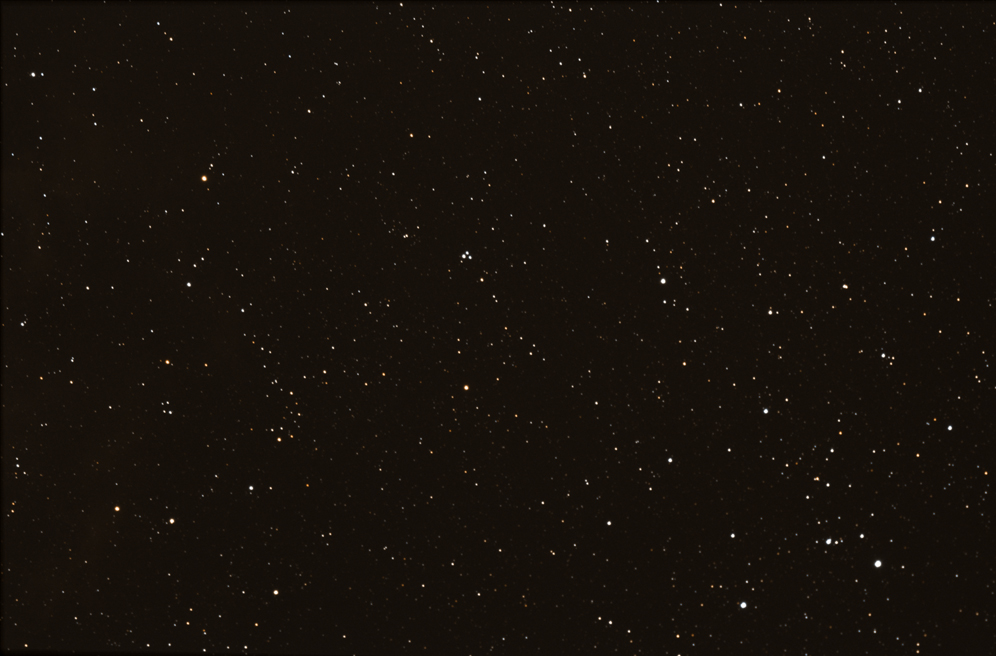
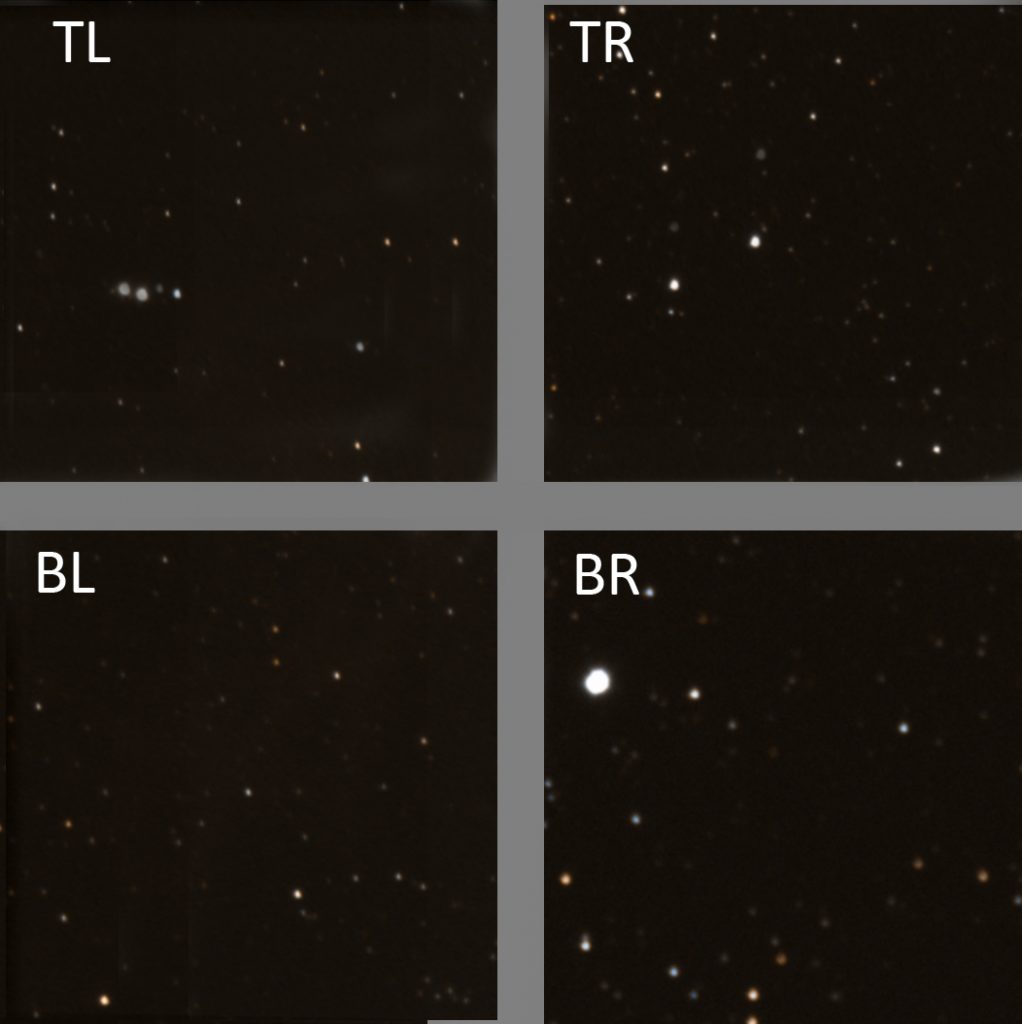
Two images using the field flattener
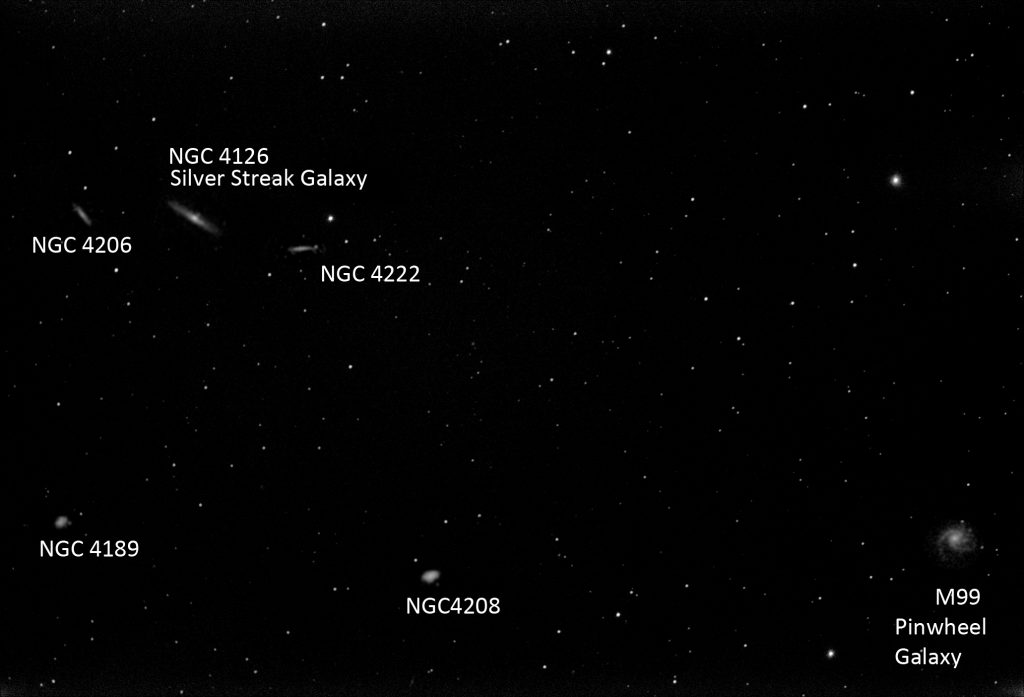
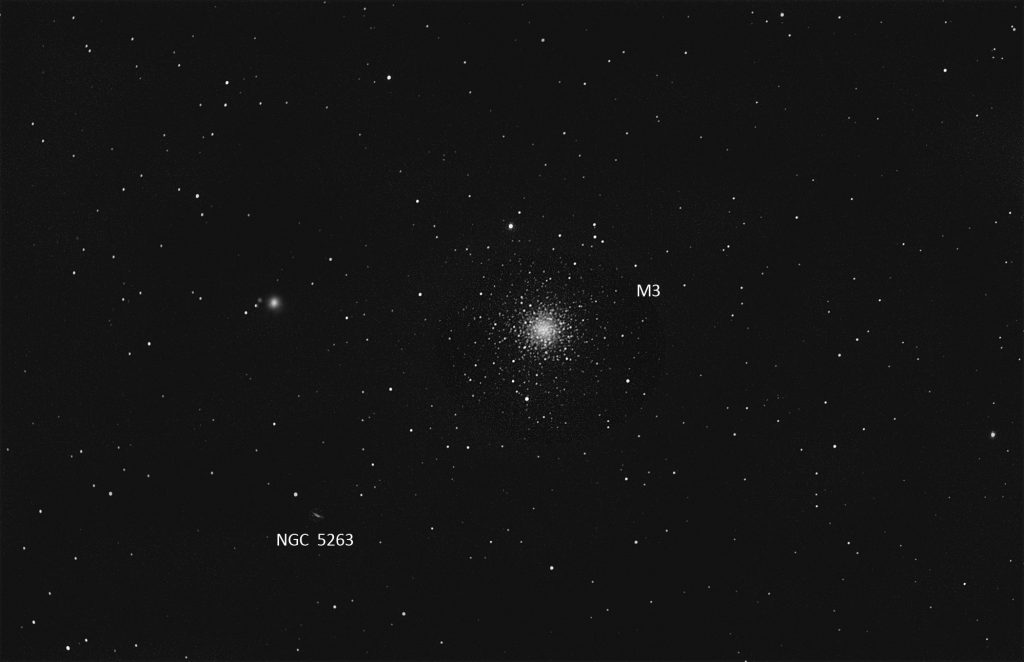
Conclusion
As well as being superb for visual use, I think that the TS-Optics 90 mm telescopes form the basis to provide first class astrographs and have the capability to produce some great images – if only we had more clear skies.